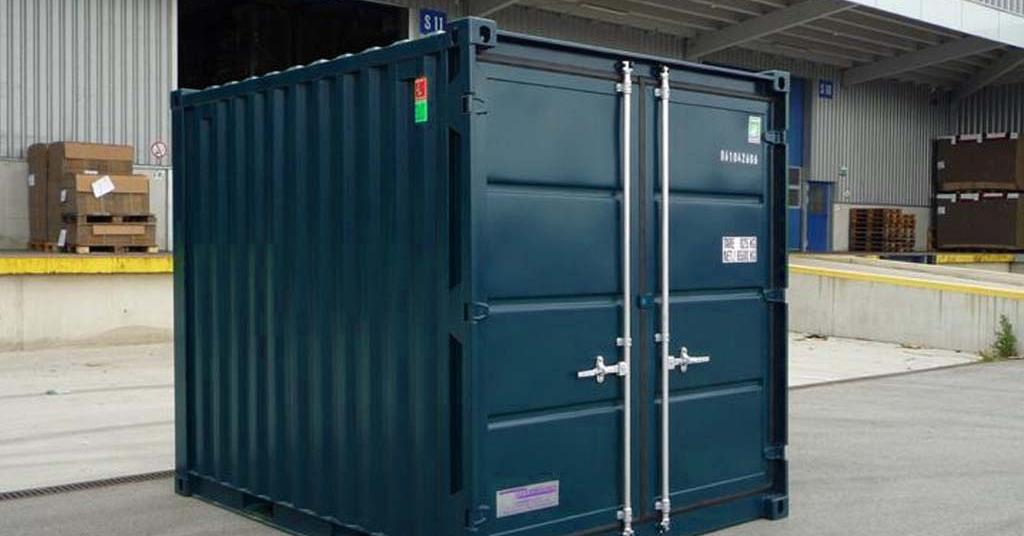Steel shipping containers are large metal boxes that transport goods by sea or land. They are also used for various purposes, such as storage, housing, office, or venue. Steel shipping containers are durable, versatile, and customizable.
However, before you decide to use steel shipping containers for your project, you need to know the different sizes and how to choose the right one for your needs. You also need to know the factors that affect the steel shipping container cost and where to buy them.
Standard Sizes of Steel Shipping Containers
The most common sizes of steel shipping containers are:
20-foot Container
The 20-foot steel shipping container, the smallest among the standard sizes, measures 20 feet in length, 8 feet in width, and 8.5 feet in height. With a volume of 1,360 cubic feet and a maximum weight capacity of 24,000 kg, it can accommodate up to 10 standard pallets or about 33 cubic meters of cargo.
40-foot Container
A standard in the industry, the 40-foot steel shipping container provides ample space, measuring 40 feet in length, 8 feet in width, and 8.5 feet in height. This size offers a volume of 2,720 cubic feet and a maximum weight capacity of 30,480 kg, allowing storage of up to 21 standard pallets or around 67 cubic meters of cargo.
40-foot High Cube Container
The 40-foot high cube steel shipping container is a variant that offers an additional foot of height compared to the standard 40-foot container. It stands at 9.5 feet in height while maintaining the same length and width. This extra vertical space results in a volume of 3,040 cubic feet and a maximum weight capacity of 30,480 kg, allowing storage of up to 25 standard pallets or approximately 76 cubic meters of cargo.
Other Sizes of Steel Shipping Containers
Several additional steel shipping container sizes are available, each catering to specific needs.
10-foot container
This compact version measures 10 feet in length, 8 feet in width, and 8.5 feet in height. With a volume of 680 cubic feet and a maximum weight capacity of 12,000 kg, it can accommodate up to 5 standard pallets or 16 cubic meters of cargo.
45-foot container
This extended variant stretches to 45 feet in length, 8 feet in width, and 9.5 feet in height. Offering a volume of 3,420 cubic feet and a maximum weight capacity of 34,000 kg, it can hold up to 28 standard pallets or 86 cubic meters of cargo.
Open-top container
This container lacks a roof or features a removable roof, allowing top-loading using cranes or other equipment. It is ideal for transporting oversized or bulky items that cannot fit inside a regular container.
Flat rack container
This container has no sides or ends, or it may have collapsible sides or ends. It enables side-loading using forklifts or other equipment, making it suitable for transporting heavy or irregularly shaped items that cannot be accommodated in a standard container.
How to Choose the Right Size of Steel Shipping Container
When selecting the appropriate size of a steel shipping container for your project, consider the following factors:
Purpose
When choosing a steel shipping container, consider its intended use: storage, housing, office space, or a venue. Different purposes require varied container sizes and types to meet your specific needs effectively.
Space availability
Assess the available space at your site or location. Ensure it can accommodate the desired size and number of steel shipping containers. Consider access and clearance requirements for delivery and installation.
Budget considerations
Consider the costs associated with container size and type when budgeting for steel shipping containers, as they impact transportation and maintenance expenses. It is important to account for these factors to ensure that your budget matches the overall costs of acquiring and using the containers.
Material or cargo type
Consider the nature of the materials or cargo you plan to store or transport in the steel shipping container. Certain items may require specific dimensions, weight capacities, or specialized container features to ensure safe and secure handling.
Future expansion or scalability
Anticipate potential future needs for additional space. If there is a possibility of expanding your operations or requiring more storage capacity in the future, it may be wise to choose a larger container or plan for the arrangement of multiple containers.
Local regulations and permit requirements
Familiarize yourself with local regulations and permit requirements related to the use of steel shipping containers. Some areas may have restrictions on container sizes, placement, or modifications.
Factors Affecting Steel Shipping Container Cost
Several factors influence the cost of steel shipping containers, including:
- Condition and age -The condition and age of the container significantly impact its cost. New containers or those in excellent condition will be more expensive than used or refurbished ones.
- Size and type – Larger containers, especially high cubes or specialty types like open tops or refrigerated containers, tend to cost more than standard sizes.
- Supplier and location – The supplier you choose and their location can affect the cost due to variations in shipping fees, availability, and local market pricing.
- Delivery fees – The cost of delivering the container to your location can vary based on the distance from the supplier, accessibility of the site, and local transportation charges.
- Market demand – Fluctuations in demand for steel containers can influence their prices. Higher demand often leads to increased costs.
Where to Buy Steel Shipping Containers
You can purchase steel shipping containers from several sources, including:
- Local suppliers – Check for suppliers or dealers of shipping containers in your local area. They may have new or used containers for sale and can provide information on pricing and availability.
- Online marketplaces – Websites like eBay, ContainerAuction, or ContainerTrader allow you to browse a wide range of containers, compare prices, and find sellers in your region.
- Container yards – Container yards or depots specializing in container sales often have various options available for purchase. Visit or contact them to inquire about their offerings.
Conclusion
Steel shipping containers come in different sizes and dimensions. The most common sizes are 20-foot, 40-foot, and 40-foot high cube containers. There are also other sizes, such as 10-foot, 45-foot, open-top, and flat rack containers. The size and type of steel shipping containers affect the steel shipping container cost and availability.
To choose the right size of steel shipping container for your project, you need to consider your purpose, space, budget, and other factors. Steel shipping containers can offer you a durable, versatile, and customizable solution.






